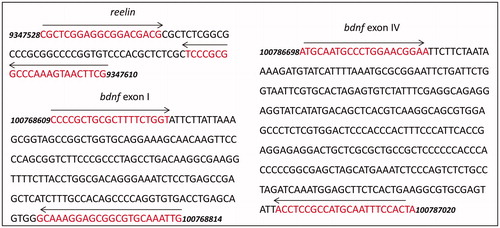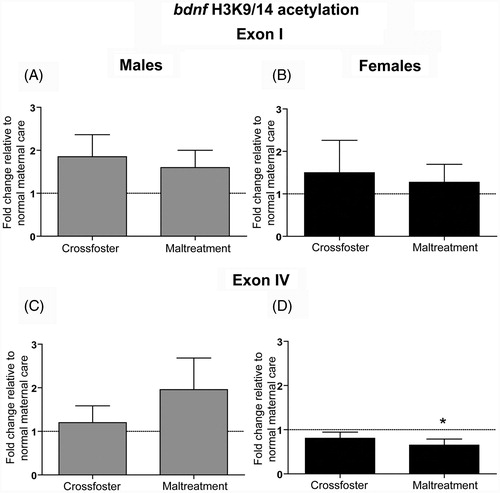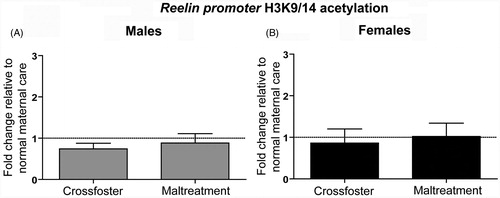Figures & data
Figure 1. Brain atlas (Paxinos & Watson, Citation2007) representation of region of interest for medial prefrontal cortex dissections (PrL = prelimbic, IL = infralimbic). Reproduced with permission.

Figure 2. Diagrams of gene targets in the study. Primer pair positions are indicated by the red text and left and right arrows. bdnf, accession NC_005102.4 (primer sequences from Gupta-Agarwal et al., Citation2012; Lubin et al., Citation2008); reelin, accession NC_005103.4.

Table 1. Average percent occurrences of individual adverse and nurturing pup-directed maternal behaviors and pup vocalizations across the seven 30-min exposure sessions.
Figure 3. Adult (PN90) H3K9/14 acetylation at brain-derived neurotrophic factor (bdnf) promoters I and IV in the medial prefrontal cortex (mPFC). One-sample (to compare to normal care controls) and two-tailed unpaired t-tests indicate that neither (A) males nor (B) females showed any differences in H3K9/14 acetylation at bdnf I. At bdnf IV, (C) males showed no significant changes, but a one-sample t-test revealed that (D) females that experienced maltreatment had less acetylation in comparison to normal care control females (*p < 0.05). Error bars represent SEM, n = 8–10/group.

Figure 4. Adult (PN90) H3K9/14 acetylation at the reelin promoter in the medial prefrontal cortex (mPFC). One-sample and two-tailed unpaired t-tests indicate that neither (A) males nor (B) females showed any differences in H3K9/14 acetylation. Error bars represent SEM, n = 8–10/group.

